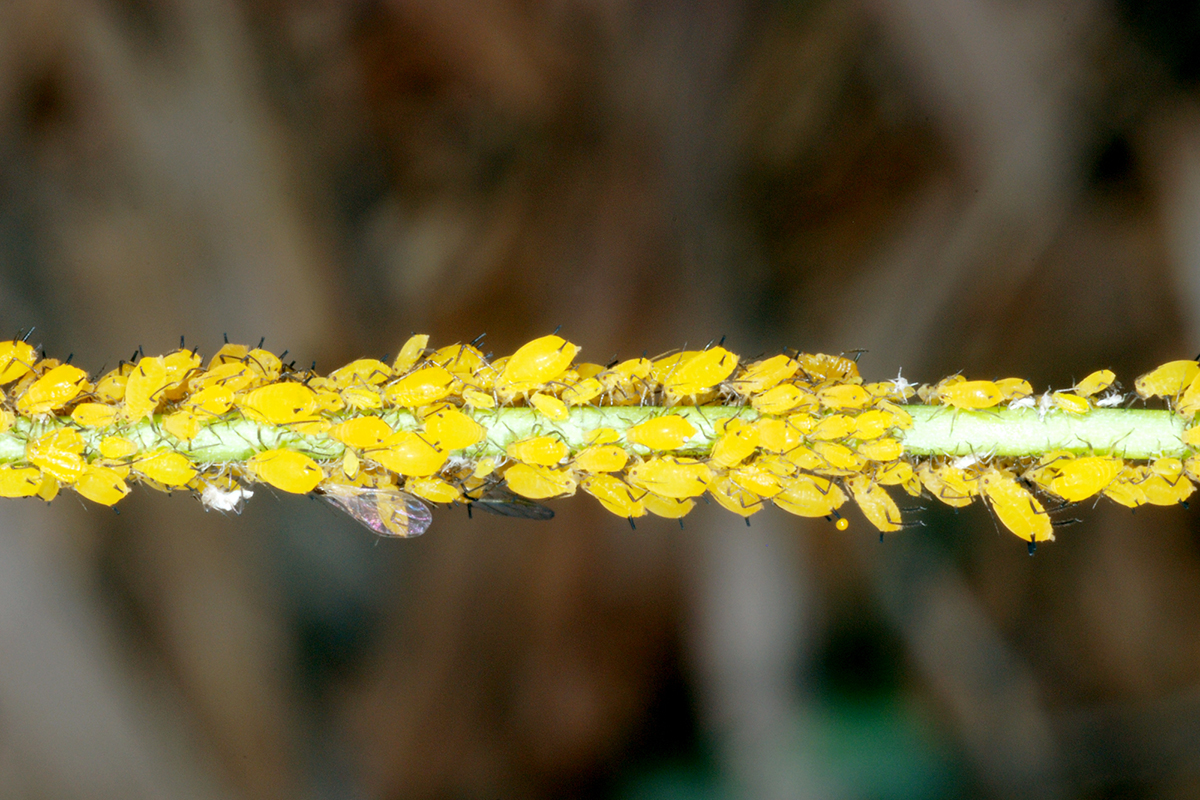
By Kait Chapman, Extension Educator in Lancaster County
For those of us who love our trees, flowers, yards and gardens, we likely want to do our best to keep our plants healthy and looking beautiful. While the love of these outdoors spaces may include a fondness for the biodiversity and nature that plants attract, some plant-eating bugs can quickly take over.
Plant-eating insects are often split up into two categories, “chewers” and “suckers.” Chewing insects, like caterpillars and beetles, have strong mandibles that chew, leaving telltale signs of holes and missing areas of leaves. In contrast, sucking insects have straw-like mouthparts that pierce into leaf tissue to suck up sap and water. Because they don’t create chewing holes in leaves, signs of sucking insect damage include leaf stippling, yellowing, curling and wilting.
Many of our sap-sucking insect pests also happen to be small with truly unique or bizarre life cycles, making them somewhat difficult to control. In the summer, we often encounter plant pests like aphids, scale insects and spider mites, who sometimes seem to show up overnight in large numbers. And while sometimes management may be as easy as a spray of water from the hose, other solutions include a combination of tactics, including careful monitoring, expert timing and thorough insecticide applications.
APHIDS
Aphids are small insects that can come in a variety of colors, from white to green, yellow to red and even black. What makes aphids so difficult is how fast they can multiply and overwhelm a plant. Female aphids do not need males to reproduce, allowing them to have dozens of generations per growing season. While the presence of aphids does not always cause problems for a plant, you can use a strong spray of water or low-risk insecticides like Neem or insecticidal soap for removal.
SCALES
Scale insects are an oddity in the world of insects and, while there is a bit of variety in their appearance, they look like their namesake: scales. What makes scales so odd are the wingless, legless, antennae-less and immobile females found motionless on plant leaves, stems and twigs. Where scale insects lack appendages, they make up for in thick armor that is difficult to penetrate with insecticides. Because of this, scale insects are most vulnerable to treatments during their freshly hatched “crawler” stage, meaning monitoring for these crawlers is extremely important for timely treatment and management.
SPIDER MITES
While not technically insects, spider mites are another pest that thrive in hot, dry weather and can quickly kill plants. One revealing symptom of a spider mite infestation is the presence of fine webbing, particularly around newer growth. Management of these mites include keeping plants well-watered, using a high-pressure spray of water for physical removal or products like insecticidal soap or horticultural oil.